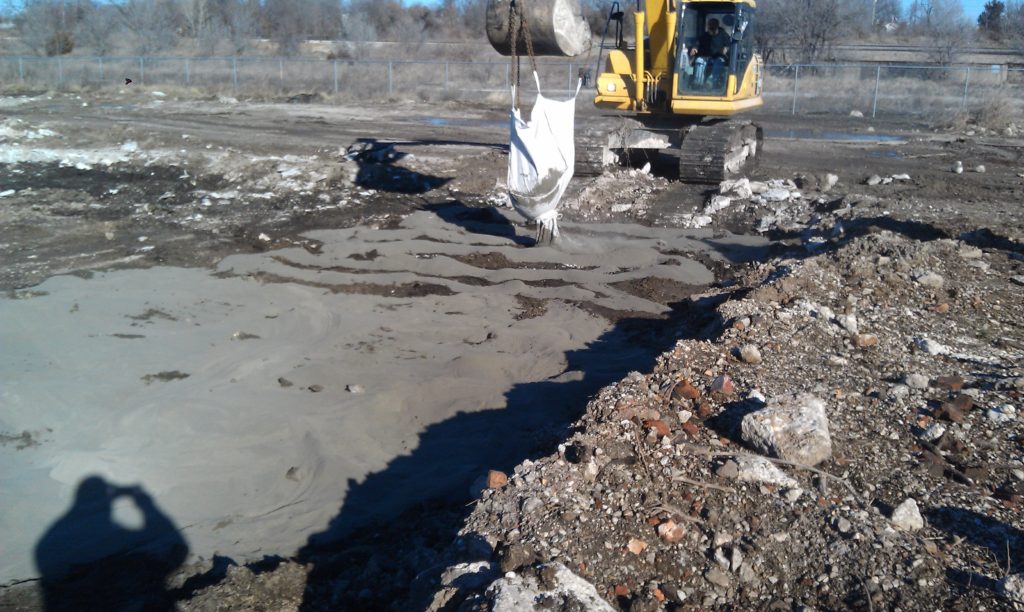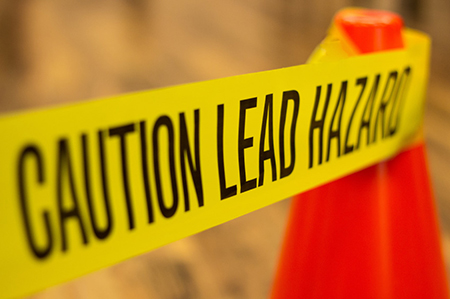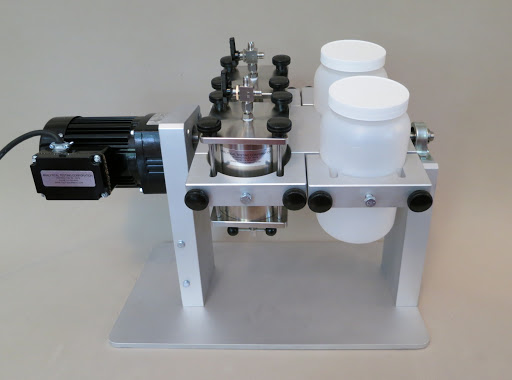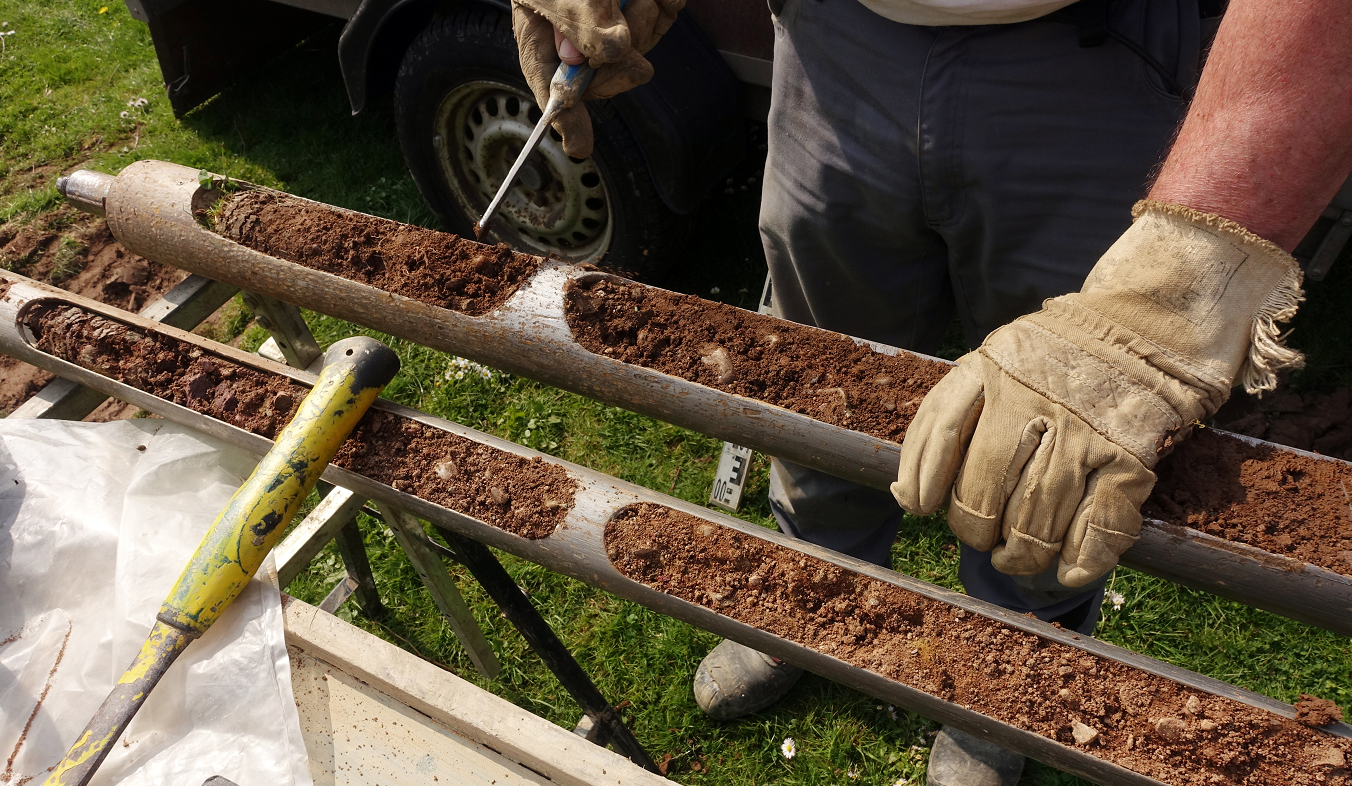What is a Soil Remediation Project?
A developer near Detroit, MI had a soil remediation project that involved a redevelop property with an ideal location with ready access to freeways.
High levels of lead contamination were identified over a large portion of the site, presumed to be associated with areas that lead-acid batteries were crushed inside cars and were left to drain.

Furthermore, a large portion of the site was contaminated soil remediation project with lead at levels that were characteristically hazardous (D008) cold storage warehouse. The only problem was the site was historically operated as a junk yard and turned into a soil remediation project.
Some soil was disposed off-site as D008 waste at great expense, but when a significant area required a large undercut for structural reasons, the disposal costs were threatening the viability of the soil remediation project.
SME reviewed options and found if regulatory approval could be obtained to treat the soil ex-situ with a heavy metal stabilization reagent and then dispose of the soil as non-hazardous waste, they could save approximately $1.4 million over hazardous waste disposal.
Discovered Hazardous Waste: D008-Pb
$1,825,950 If Disposed as Hazardous Waste

“Solidification/stabilization (s/s) reduces the hazardous potential of contaminated sites by converting the contaminates into their least soluble, mobile or toxic form, thus minimizing their potential migration offsite. Studies say that modified silicates can be used to immobilize organic contaminates.” Memorandum EPA 540/2-91/009.
Soil Remediation Project Solution:
Blastox is proven long-term stable by EPA. Work with the landfill well in advance of preparing to send treated waste, to confirm that the TCLP samples for waste characterization, collected post-treatment, meet their requirements. Because of its effectiveness, Blastox had been used successfully on thousands of tons of heavy metal soil remediation project. You can apply it at low dose rates and have peace of mind knowing that the soil remediation waste will remain stable, always.
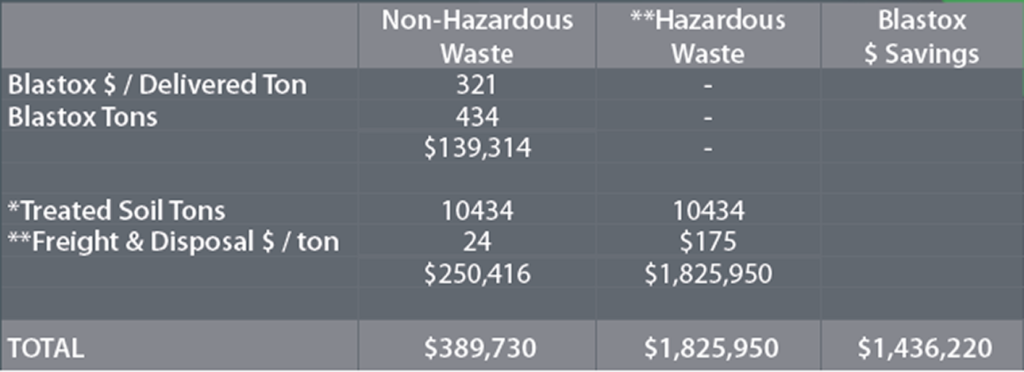
Results/Lessons Learned:
If the heavy metal contamination in soil exceeds the Toxicity Characteristic Leaching Procedure (TCLP) limits, stakeholders should be aware that chemical reagents, such as Blastox exists that can be added directly to the soil to render them non-hazardous. This significantly drives down the cost of disposal as hazardous waste transportation and hazardous waste disposal are avoided, allowing for local, non-hazardous waste disposal. This project saved $1.4 MM for the property owner during this soil remediation project.



